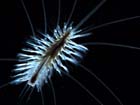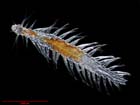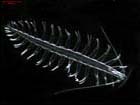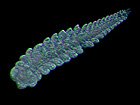Polychaetes - brittle worms
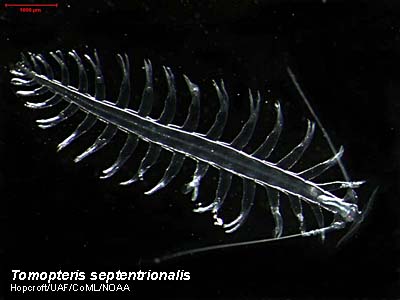
Polychaetes are one of the three major groups of segmented worms (Phylum Annelida), and almost all are marine. Polychaeta means "many chaeta", with chaeta being the numerous brittles sticking out the side of each segment often between fleshy paddles called parapodia ("side-feet"). Parapodia are used for both swimming and as gills.
Polychaetes are generally bottom living, but many species release eggs that live as plankton during their larval phase (see meroplankton). Only 6 families have species that spend their entire lives in the plankton, with some bottom dwelling species doing some of their hunting in the water column, or moving into the water column to spawn. Pelagic polychaetes are all predatory, although what they eat is poorly known. Some have very well developed eyes and most have obvious sensory tentacles. The life cycle and life expectancy of most pelagic species is also poorly known.
At present, we believe there to be at least 6 holoplanktonic species in the Arctic, plus deep-water species such as Bathypolaris that often swim and/or hunt within several meters of the seafloor.
Page Author: Russ Hopcroft
Created: February 24, 2008

